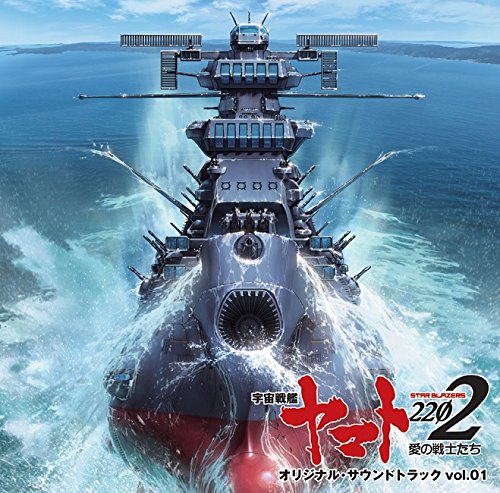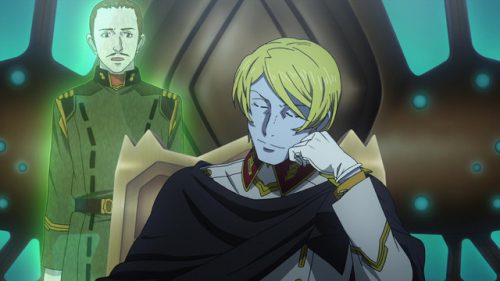

The original Space Battleship Yamato, or Star Blazers to Generation X, is regarded as a timeless classic. If anything, it’s considered the OG to space opera in anime. Yes, remakes of classics are subject to controversy, but in some cases, remakes can work and we feel that with Space Battleship Yamato 2199 (with 2199 emphasizing that the story takes place in 2199), not only does a great job of being faithful to the original by modernizing it but enhances it for all audiences. So for this edition to Then Vs. Now, we wish to compare the original 1974 Space Battleship Yamato and the 2013 remake.
Story
The stories of both versions are pretty much the same. It is the year 2199 and the human race is about a year away from extinction due to the continuous attacks of radioactive meteorites from the Gamillas Empire. Thanks to the help of Yurisha of the Planet Iscandar, which neighbors the planet of the Gamillas Empire, humanity has a chance to save the Earth as they can make a ship to travel to Iscandar in order to receive the appropriate technology from Starsha, Yurisha’s sister. From there, they modify the ruins of the Yamato, a sunken World War II battleship, for intergalactic light speed travel and face the overwhelming forces of the Gamillas Empire. Though the plots share similar foundations, they do share different executions and portrayals. For example, the Gamillas Empire in 2199 are given more focus and development as to how their conquest and hierarchy functions on racial lines. Audiences learn that there are actually good people in that Empire and are willing to go against Dessler, the leader of the Gamillas Empire, and join the Yamato.
Toxic Masculinity
When watching the original series, audiences may be turned off by what modern liberalism calls toxic masculinity. The male cast members would act in a certain way because that’s what being a real man is all about. This is emphatically portrayed in the beginning with Susumu Kodai’s brother, Mamoru, when he faces the Gamillas Empire in the first episode. In the original series, he should have retreated since he had no chances of winning, but he stays to fight because that’s what a real man does. In the remake, Mamoru’s motivations for not retreating are portrayed more sensibly and nobly since he wants to help Captain Okita escape. And as for what happens to Mamoru after that battle also differs between both versions. In the original, he survives and is on Iscandar, but dies in 2199.
More Female Characters
In the original series, the only significant female cast members are Yuki and Starsha. In the 1973 edition, Yuki is regulated to domestic roles beyond being a communications officer such as being an assistant nurse, and is victim to Analyzer’s sexual harassment of him flipping up her skirt. In the 2199 series, the fan service is taken out and Yuki’s resemblance to Yurisha plays a bigger role (as it should have been done in the original in our humble opinion). In addition to making more use of Yuki, 2199 expands its female roster on both sides of the conflict and they add more dynamic and contribute to the story rather than just being there for diversity. Akira, who was a male in the original, is now a female for 2199. Considering that Akira can also be a female’s name, this change is easy to justify for simple cosmetic reasons. However, she is given her own distinct personality and actually contributes way more than her original counterpart, who just died instantly. For the Empire, we are given Melda, their ace pilot. Through her warrior’s honor, she sees the corruption of her Empire and plays an important role in stopping the conflict. Last, Starsha and Yurisha are given one more sister in 2199, and the truth behind her is something you have to see for yourself.
Art/Animation
What mainly stays consistent in both versions is that the character designs, the uniforms, the spaceships and everything else are just about the same, but everything is scaled up in 2199. For example, the original Yamato was reported to be around 230+ meters in length while the 2199 version is upgraded by about 100m to make it feel more realistic. 2199 is presented in a way that reflects modern animation techniques with lighting, CG, resolution, and everything you can think of. If you watch both versions back-to-back, no matter which order, you’ll easily recognize who’s who. Even the new characters are designed and presented in a way that respects the style of Leiji Matsumoto, the character designer of the 1973 series.
Music
In addition to the art, the music in 2199 is the same as the original. Not just the opening and ending theme songs (taken directly from the original series), but it uses the original background music as well. By no means does it date the series, but effectively emphasizes its intense and militaristic atmosphere, and immerses the audience to the underdog nature of the Yamato crew’s mission.
Final Thoughts (Voice Acting)

The quality of the voice acting is something that is pretty much a matter of taste. Both versions feature great talents for their times. For Kodai, he is played by Kei Tomiyama, the Mel Blanc of Japan in the original, and in 2199, he is voiced by Daisuke Ono, the voice of Jotaro in JoJo’s Bizarre Adventure. With Yuki, she’s voice by Harumi Ichiryuusai in the original series (also famous as Saeko in City Hunter), and is played by Houko Kuwashima (the voice of Sango of Inuyasha) in the remake. Both casts capture the atmosphere of their respective versions and is worthy for fans to hear side by side for comparisons, and is a must see for this alone. So if you love sci-fi whether old or new, Space Battleship Yamato is your anime.
[recommendedPost post_id='222421' url='' title='' img='' class='' widget_title='']
Add Comments